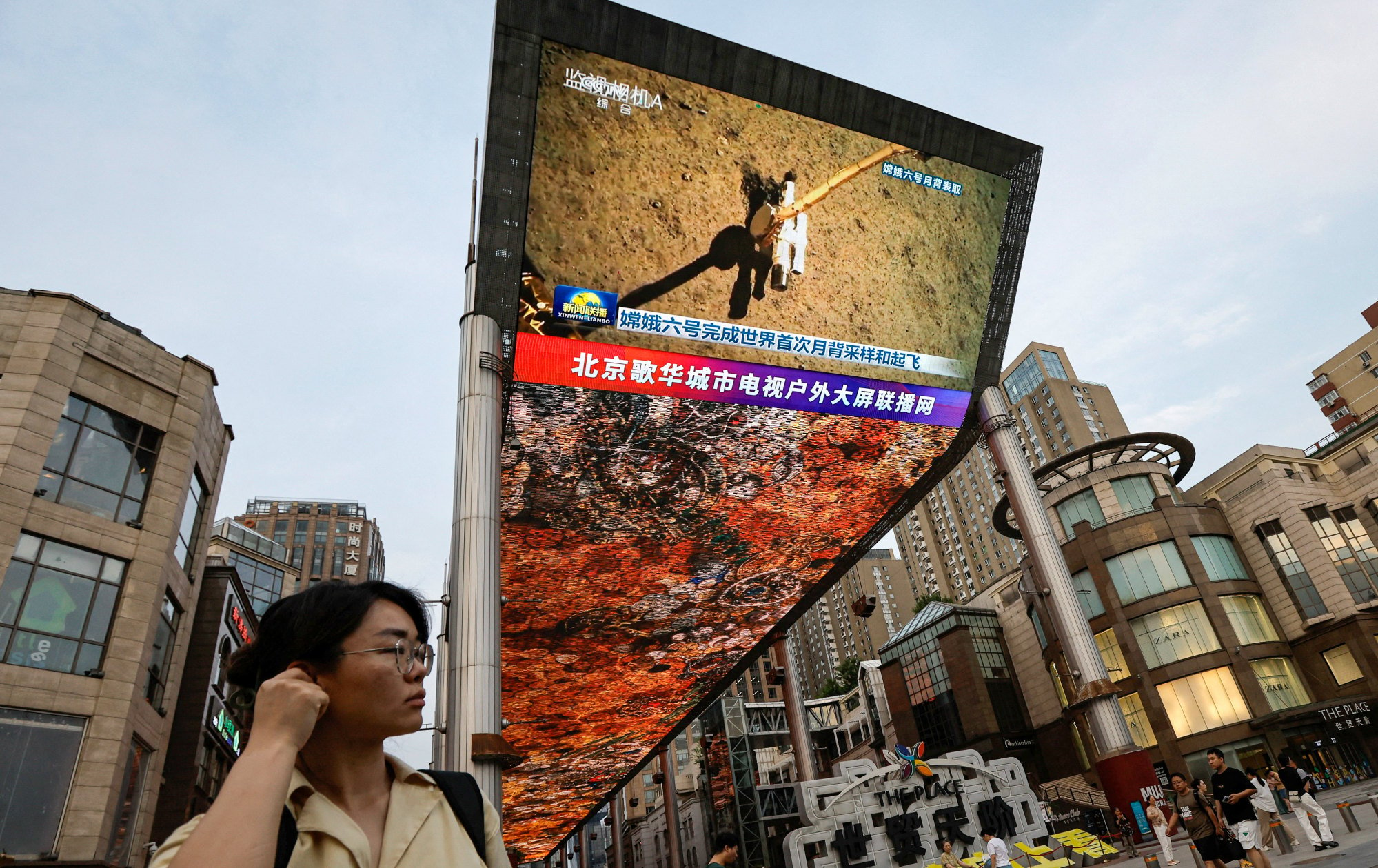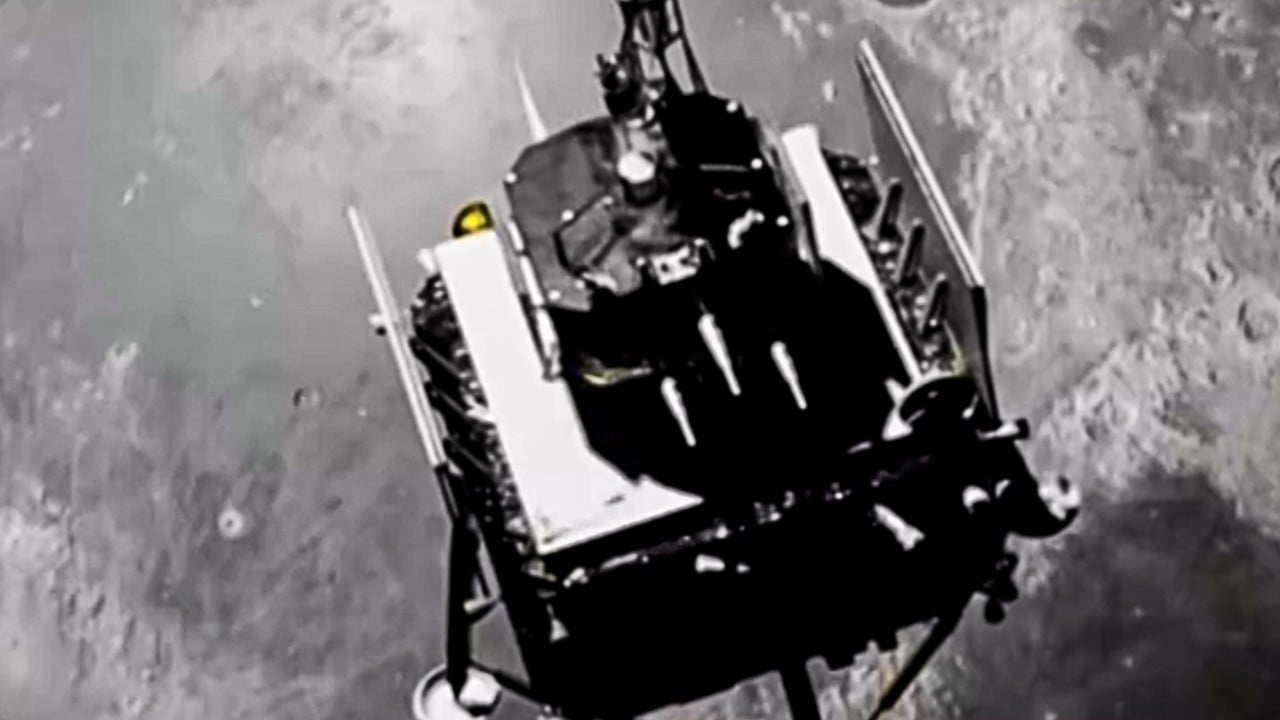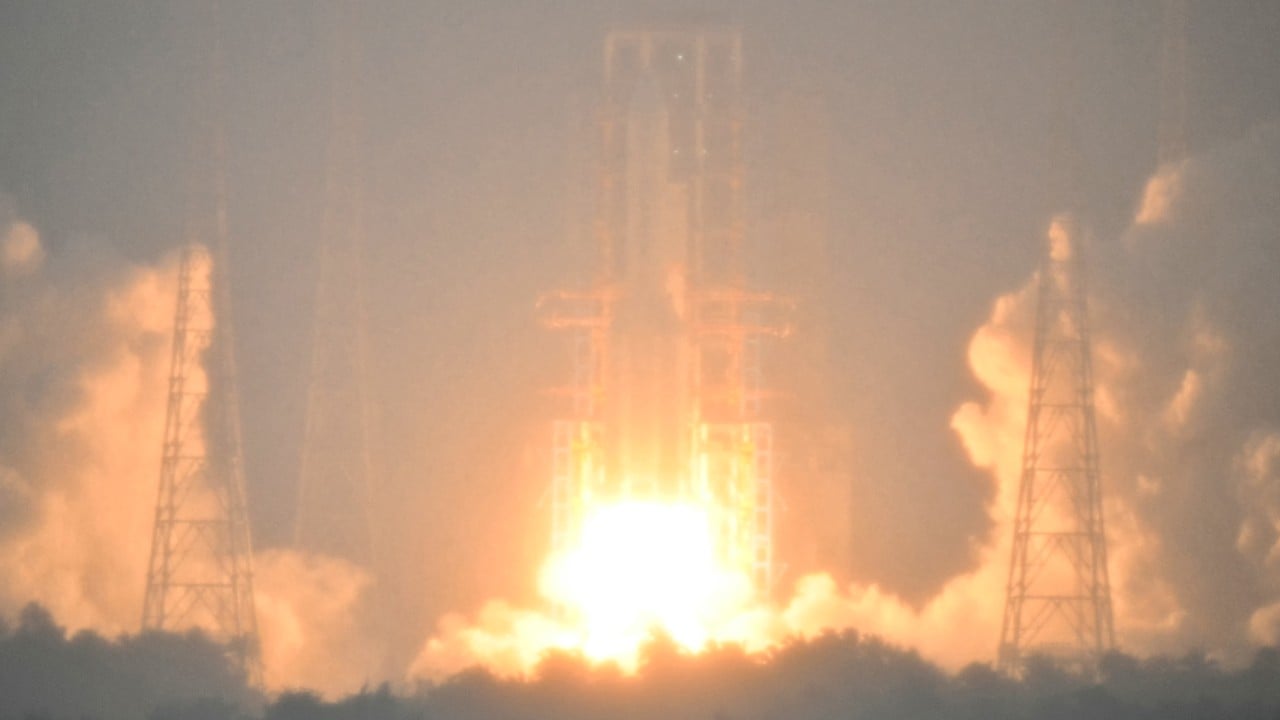“In the historical context of this period, the race to demonstrate superior political force made lunar exploration unsustainable,” the plan states.
The new plan, “Strategic Concept for Development of Resource Utilization of the International Lunar Research Station,” was drafted under the leadership of Pei Zhaoyu, deputy director of the Lunar Exploration and Space Engineering Center of the CNSA , and published in the Chinese Journal of Astronautics in April. .
“And countries like the United States don’t have a clear advantage in this area. »
Washington has long presented China as a rival in this new race for the moon, viewing the race primarily as a land grab.
But China sees the game differently, according to Pei.
Beijing aims to replicate its terrestrial success by building large-scale infrastructure on the Moon. According to the plan, this will help establish technological, industrial and economic advantages to encourage more countries to stop following the United States and join China-led efforts to exploit lunar resources.
“The use of lunar resources is a scientific challenge, a technological driver and an economic reward. Efficiency and benefits will be the primary evaluation criteria, guiding construction, operation and sustainable development,” Pei’s team wrote.
These hydrogen and oxygen molecules, trapped in lunar soil particles, indicate the potential presence of up to 270 billion tons of water resources on the Moon, which could be used to produce rocket fuel, water and oxygen for astronauts, Chinese space authorities said on social media. media.
According to the latest plan, China will launch two large spacecraft in the next few years to conduct detailed explorations of these resources and validate key technologies for resource utilization. By 2030, collaborative work between humans and intelligent machines should be achieved on the lunar surface.
A “lunar resources exploration system covering a large area of several thousand kilometers and a depth of several hundred meters” will also be completed during this period.

By 2045, China’s lunar base will have large facilities such as power plants, factories, scientific research institutes, rocket launch sites, tourist centers and a small underground city.
Chinese resource exploration robots will roam the entire lunar surface. It is estimated that more than half of the investments in the construction and operation of these facilities will come from countries other than China, and economic activities will reach a break-even point. Humans will use this base as a starting point to explore Mars.
“China will become a leader in human deep space exploration activities,” the plan said.
China’s first lunar probe, Chang’e-1, was launched in 2007. Due to lack of experience and confidence, this small two-ton satellite circled the Earth for more than two weeks before heading towards the Moon.
Immediately after the launch, Luan Enjie, then commander-in-chief of the lunar exploration project, told the Xinhua news agency: “China will not engage in any form of lunar competition with any country. »
Although the United States began lunar exploration earlier, due to mission delays and funding limitations, “it lost its absolute leadership position,” Pei’s team wrote.
To counter China’s advances, the US government has entrusted private companies with crucial lunar missions, believing they could build a lunar base more efficiently than NASA. To motivate these private actors, the American Congress adopted a law affirming the principle: “First to explore, first to possess”.
The US space laboratory Skylab operated for less than a year before crashing, and the core technology for the International Space Station is provided by Russia.

